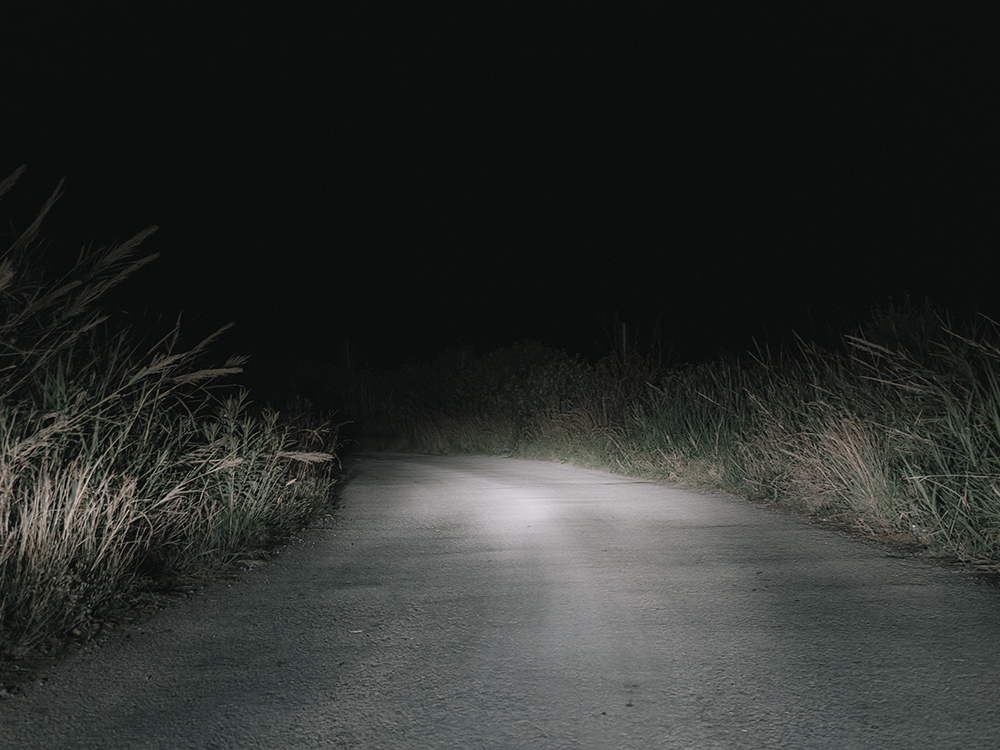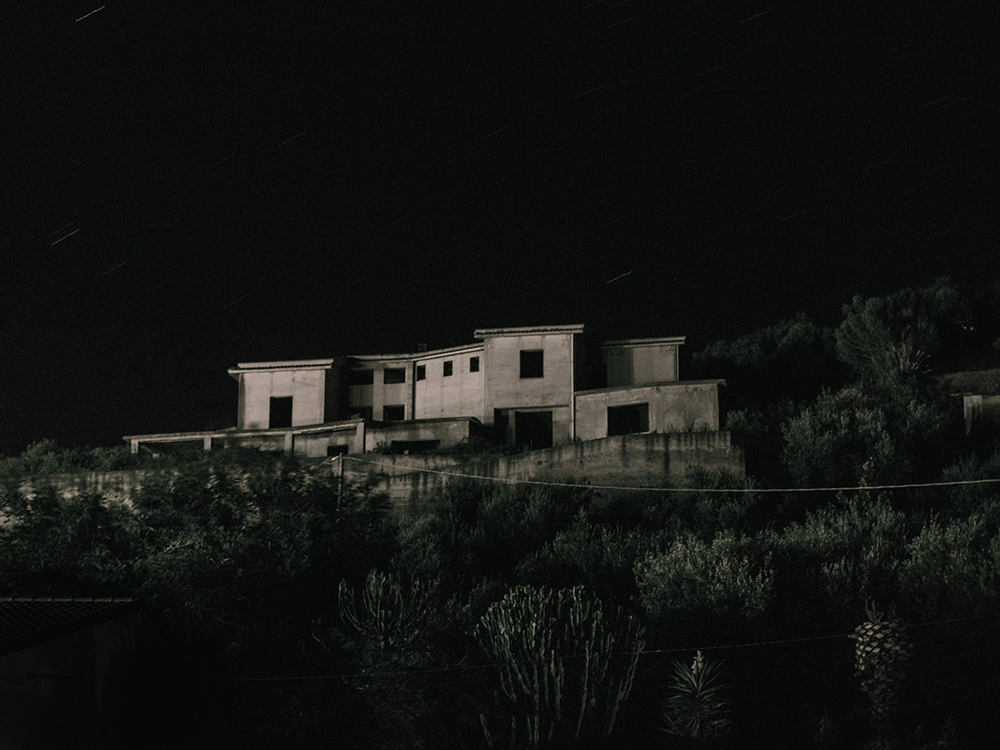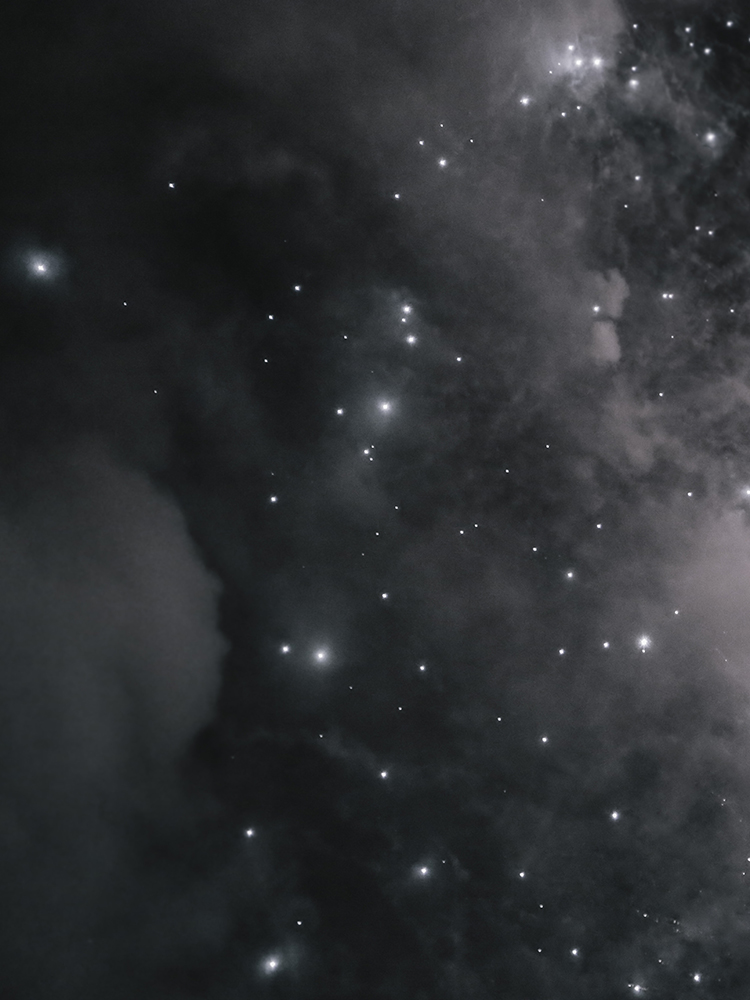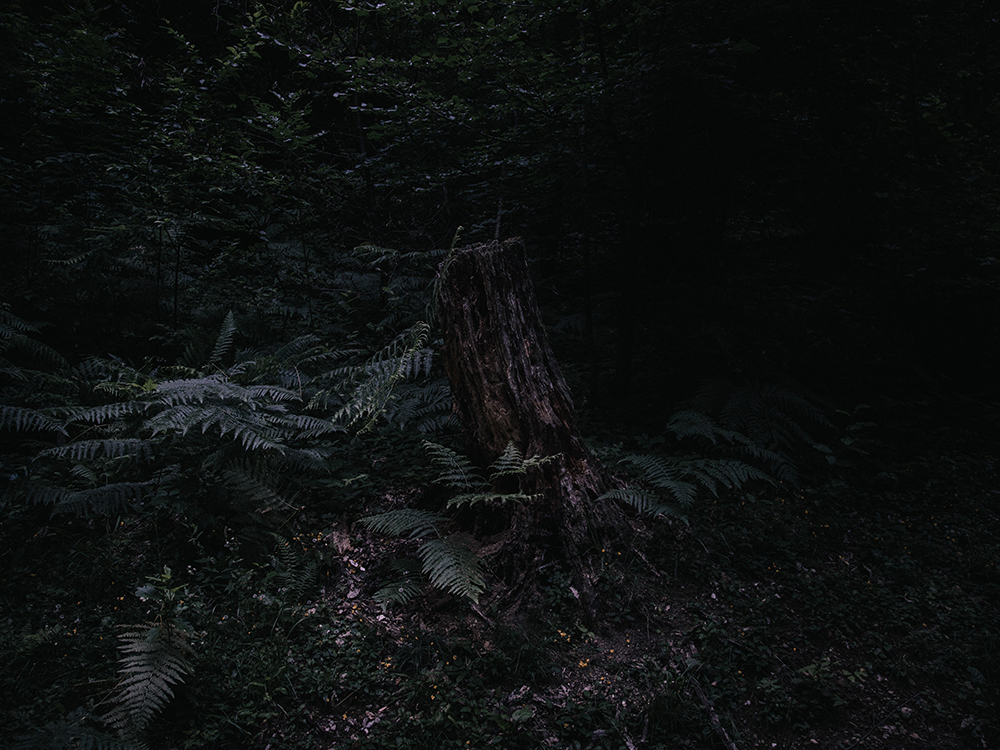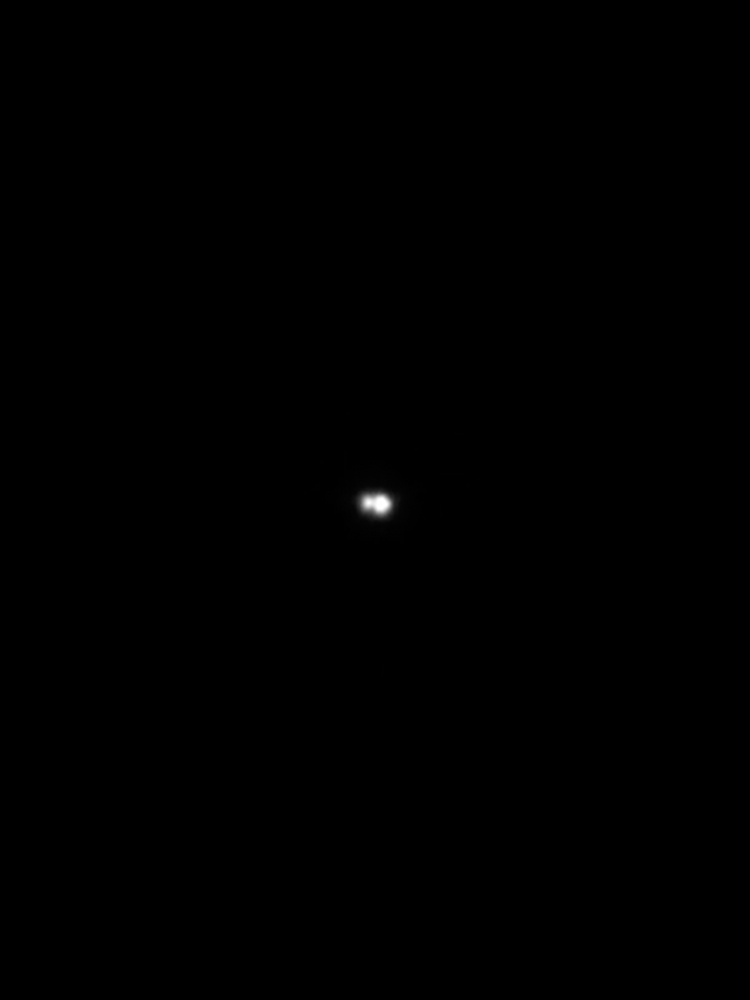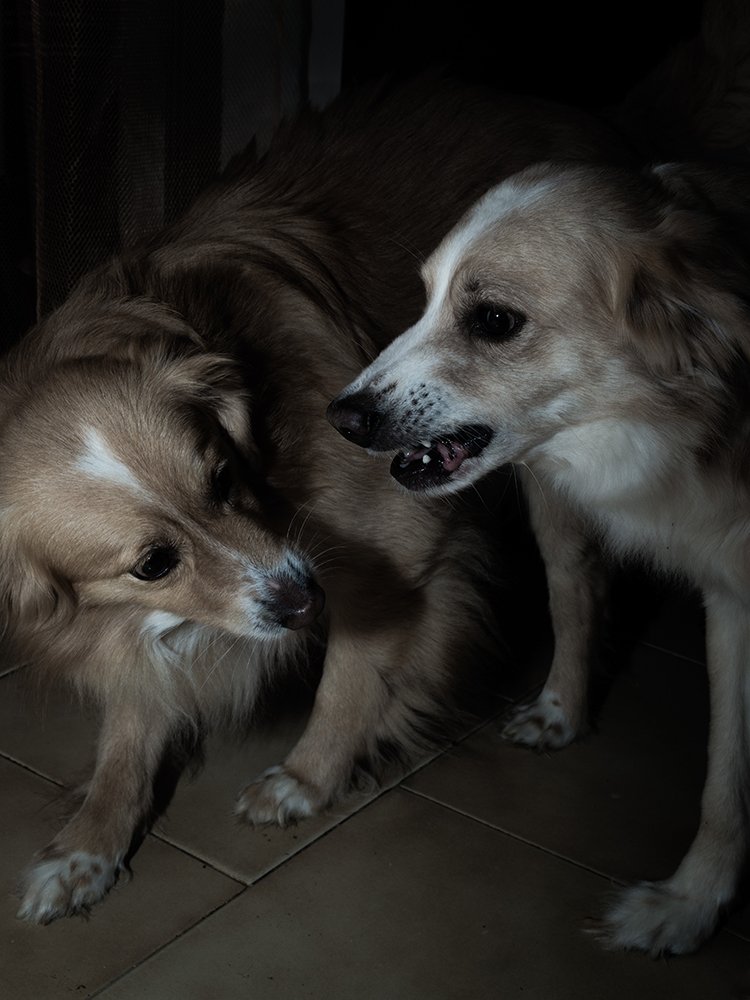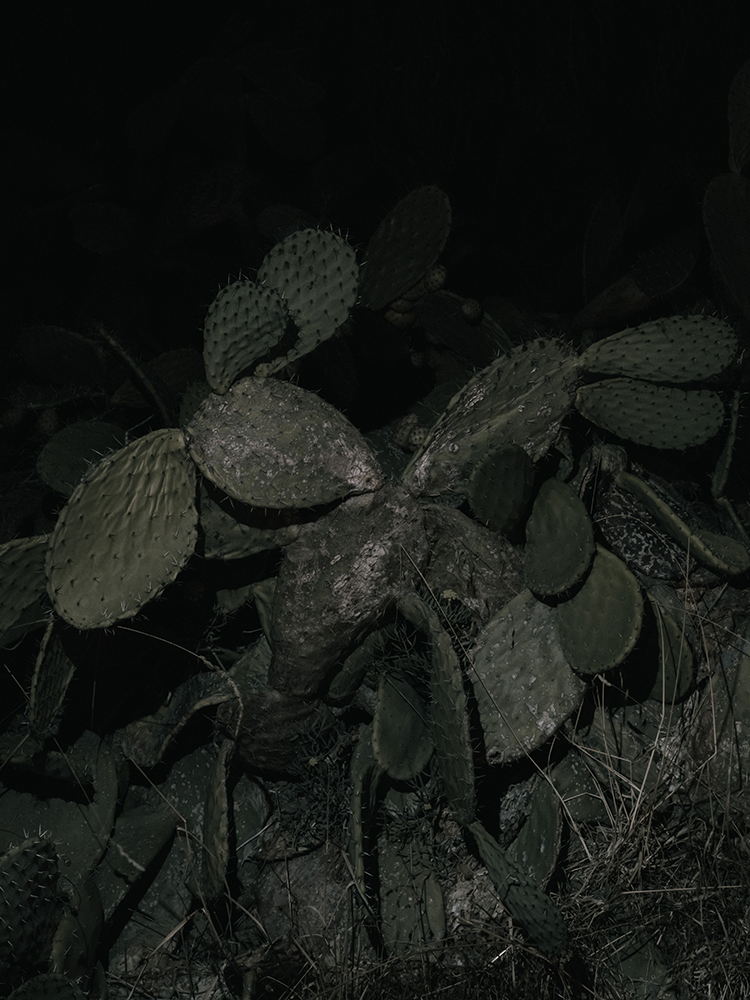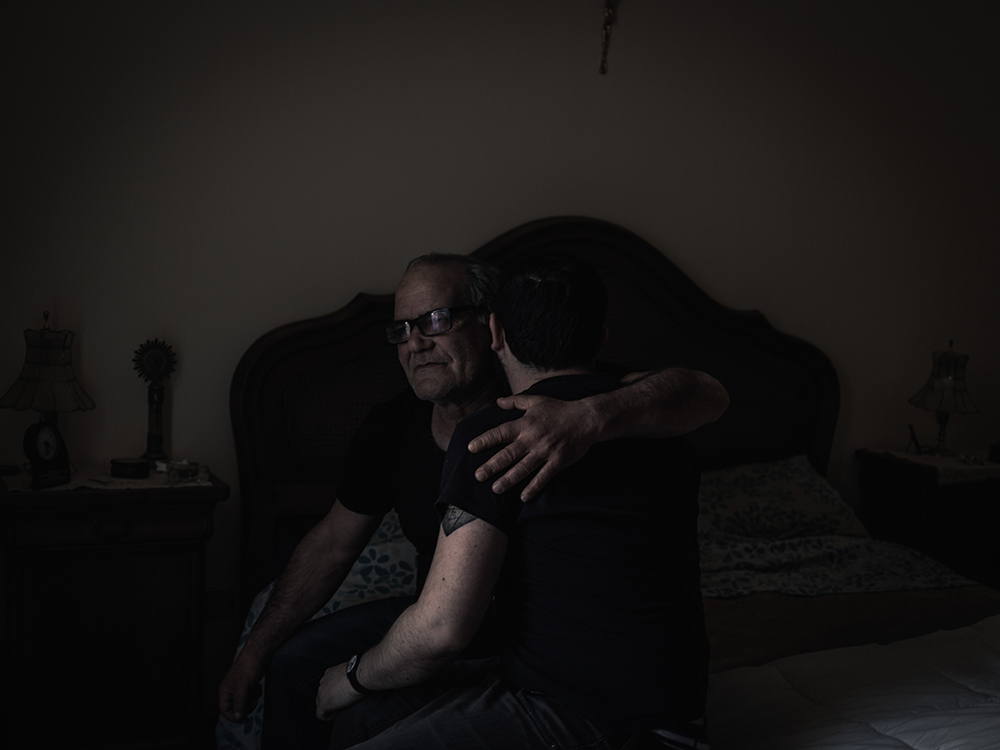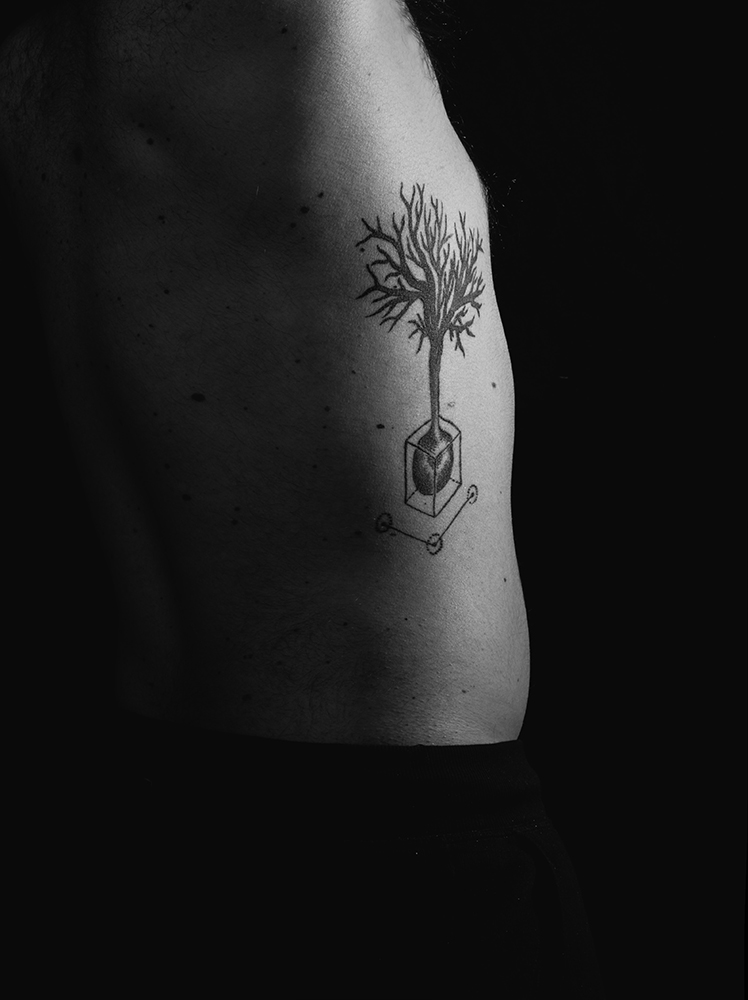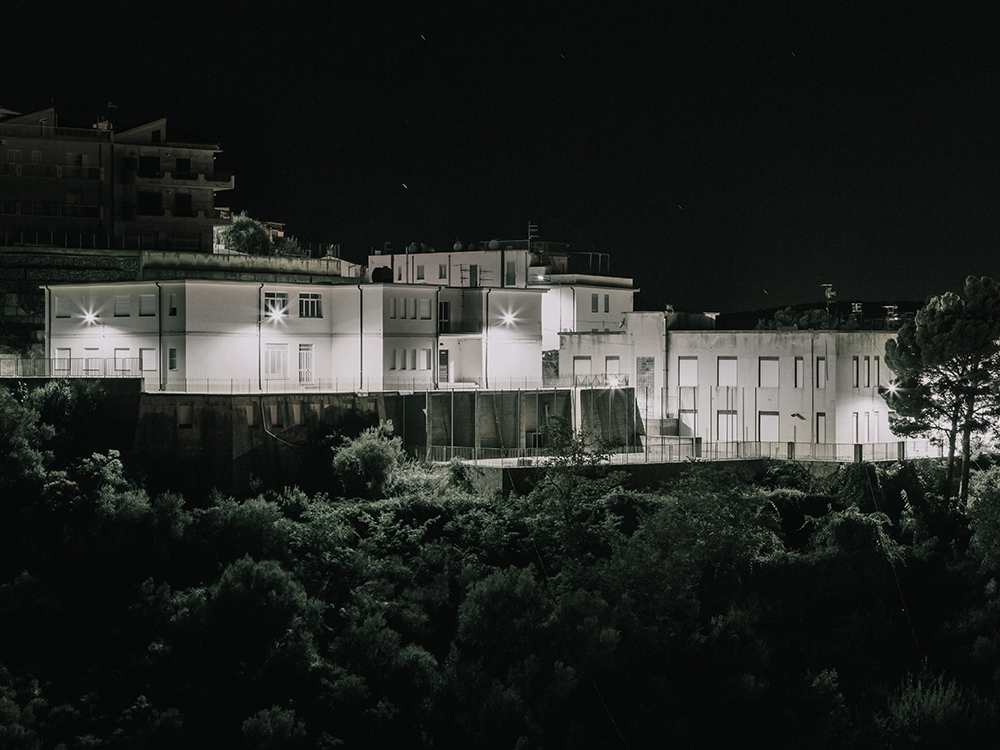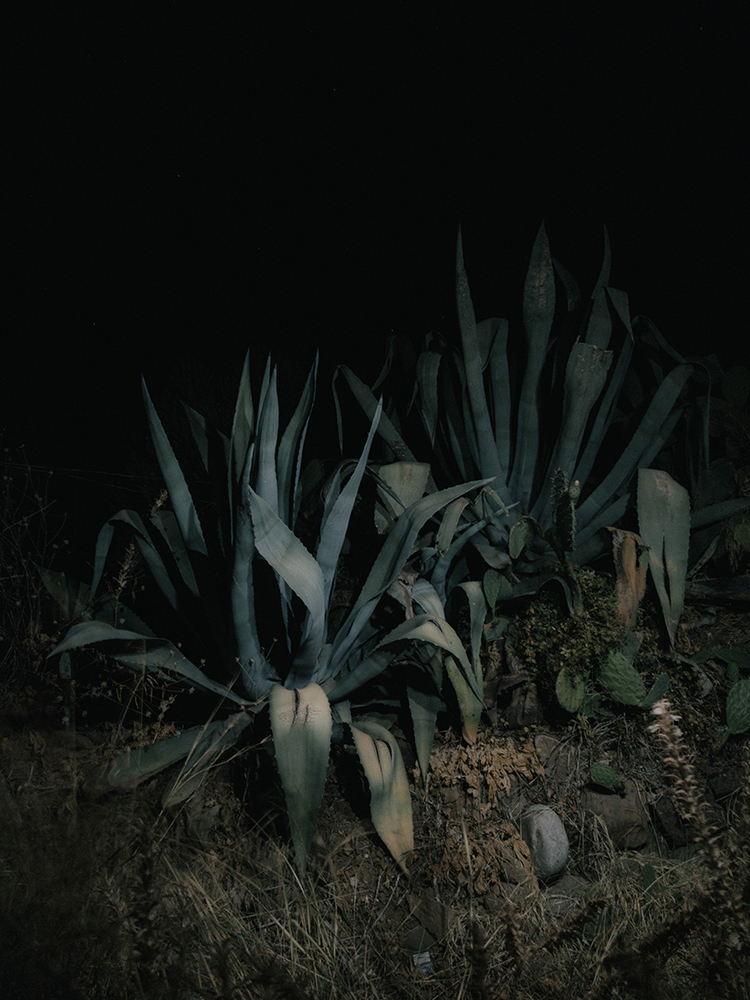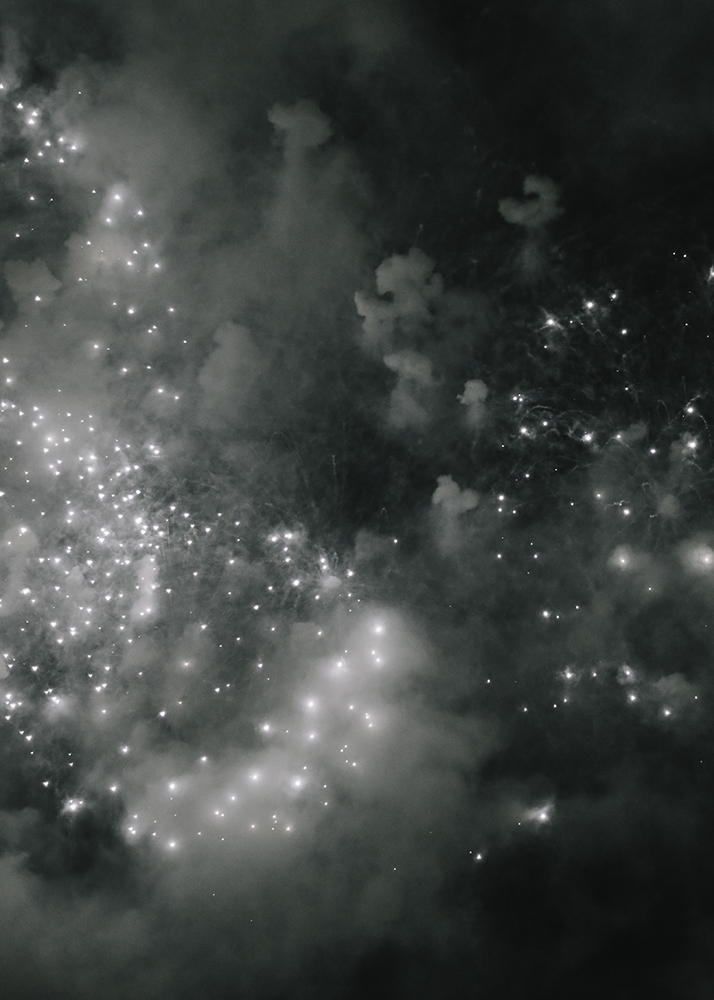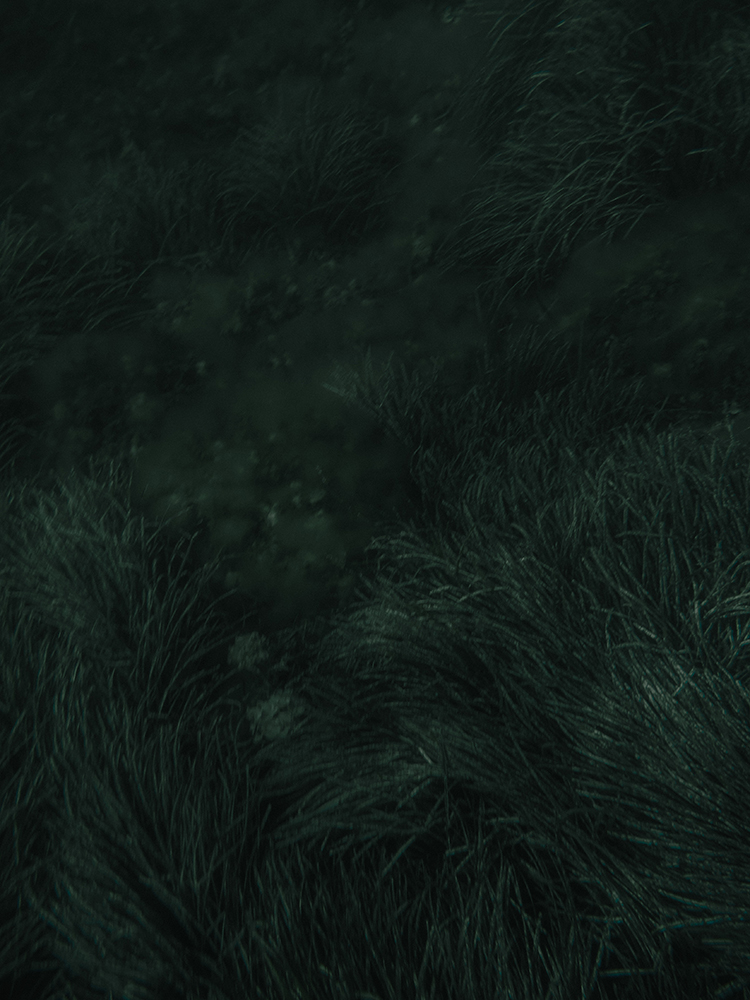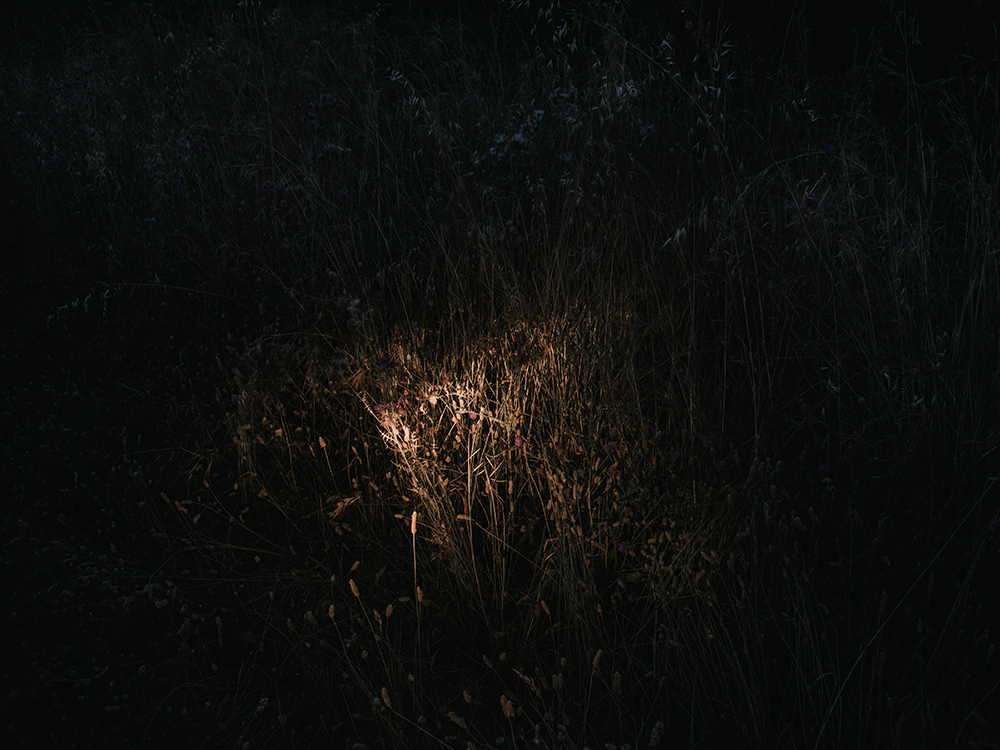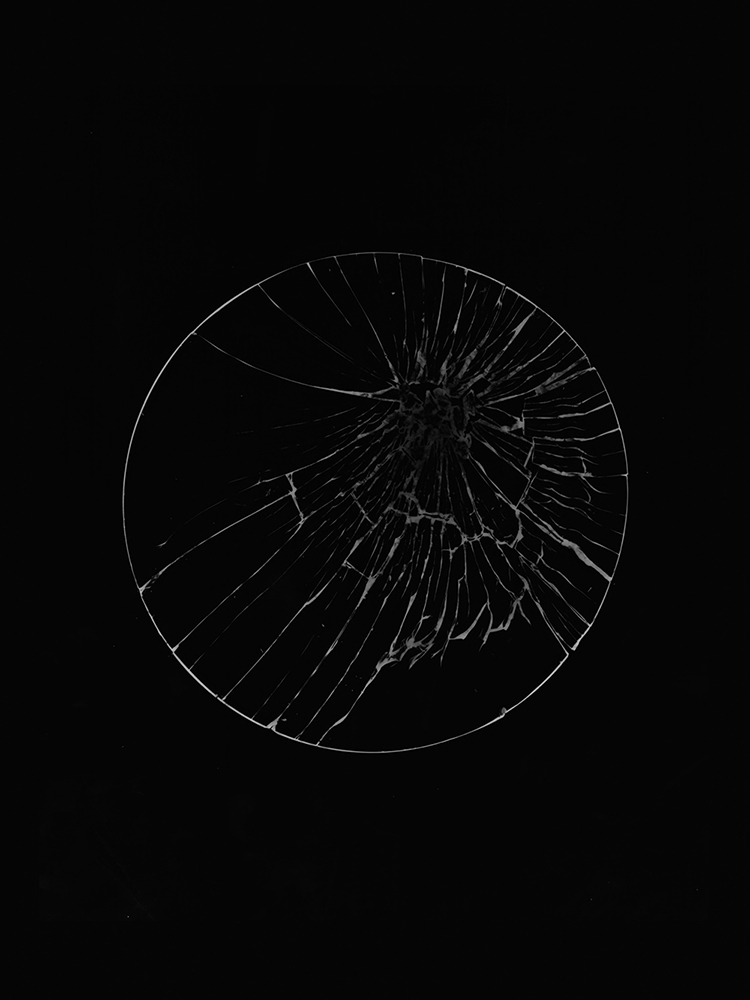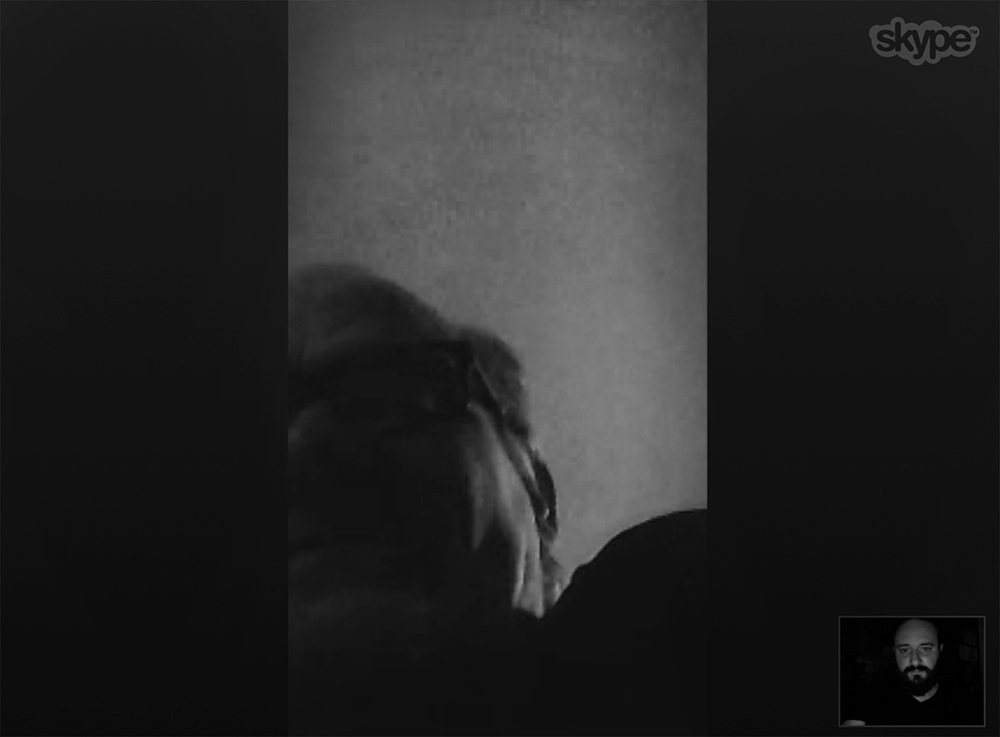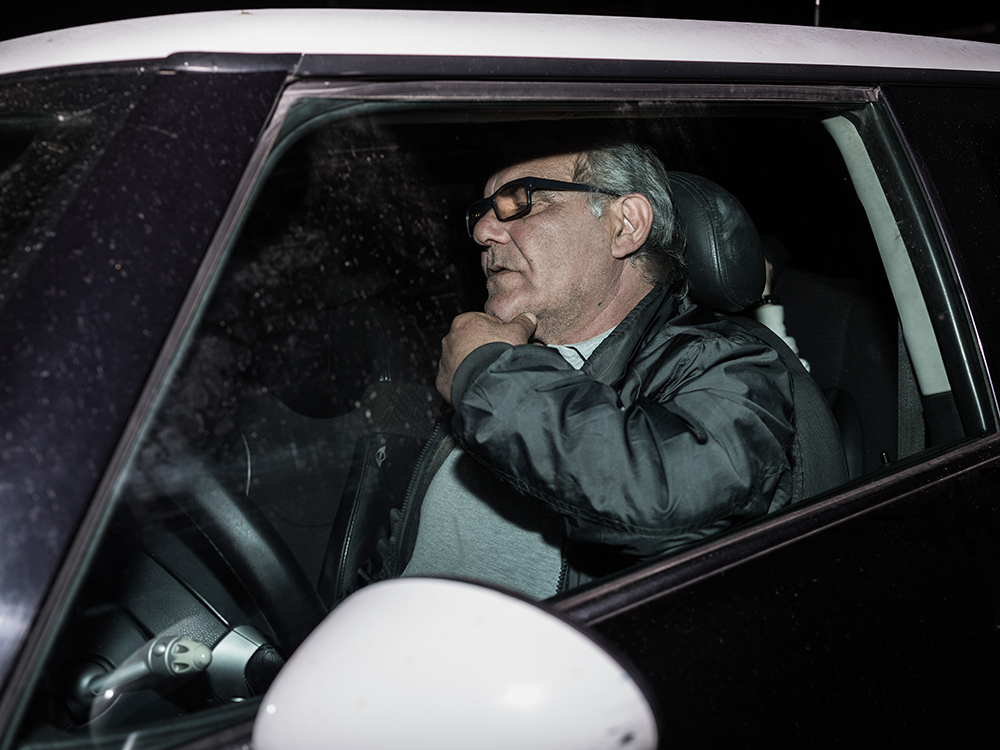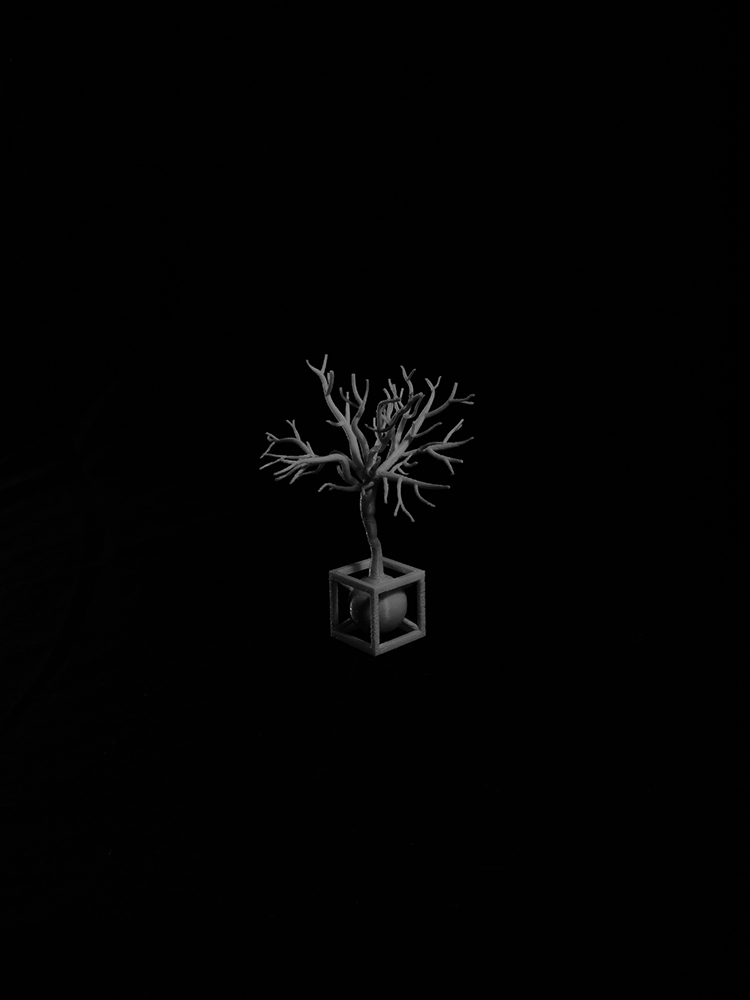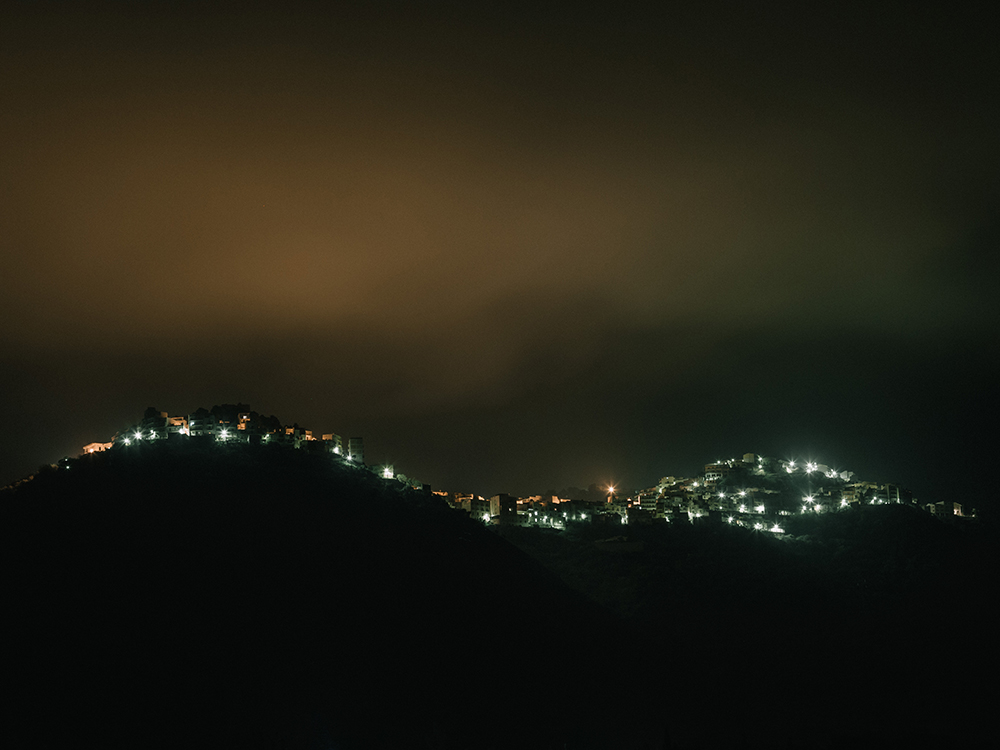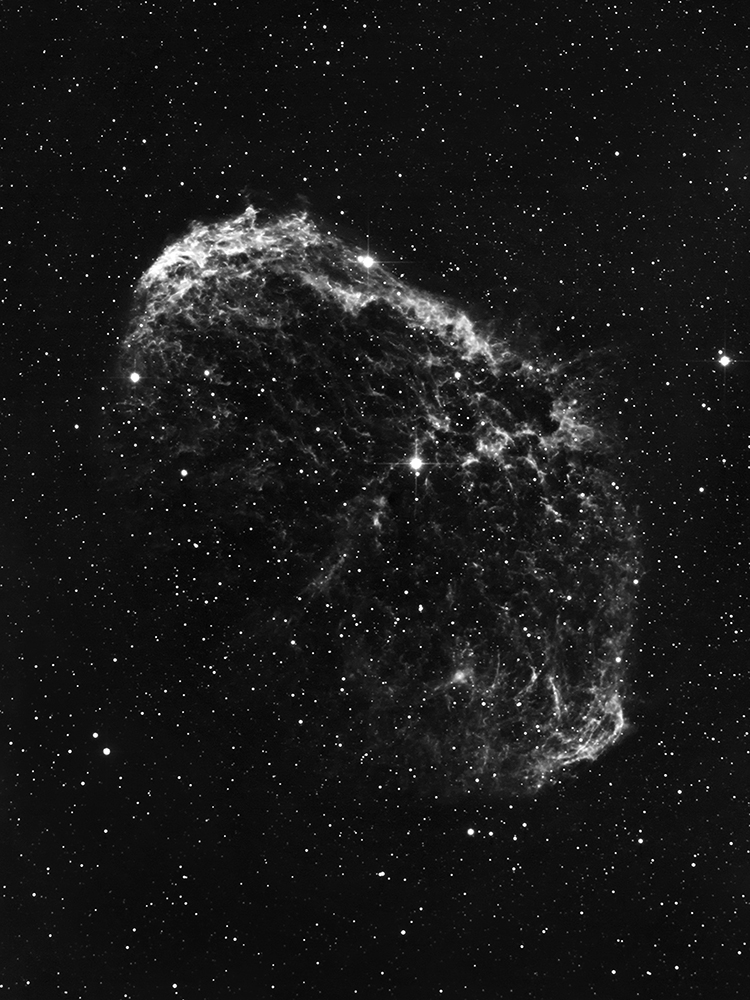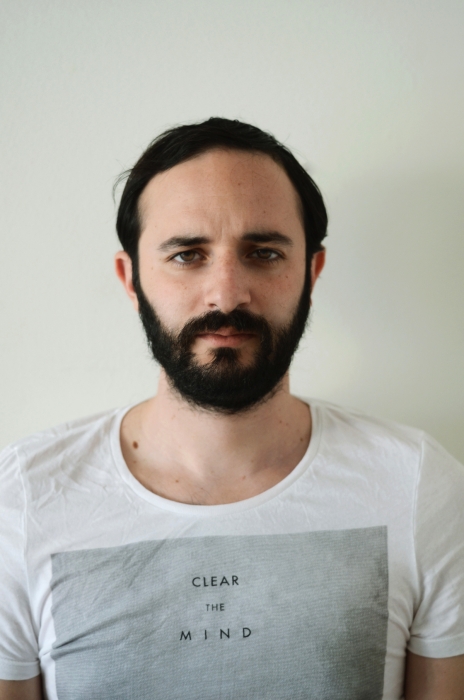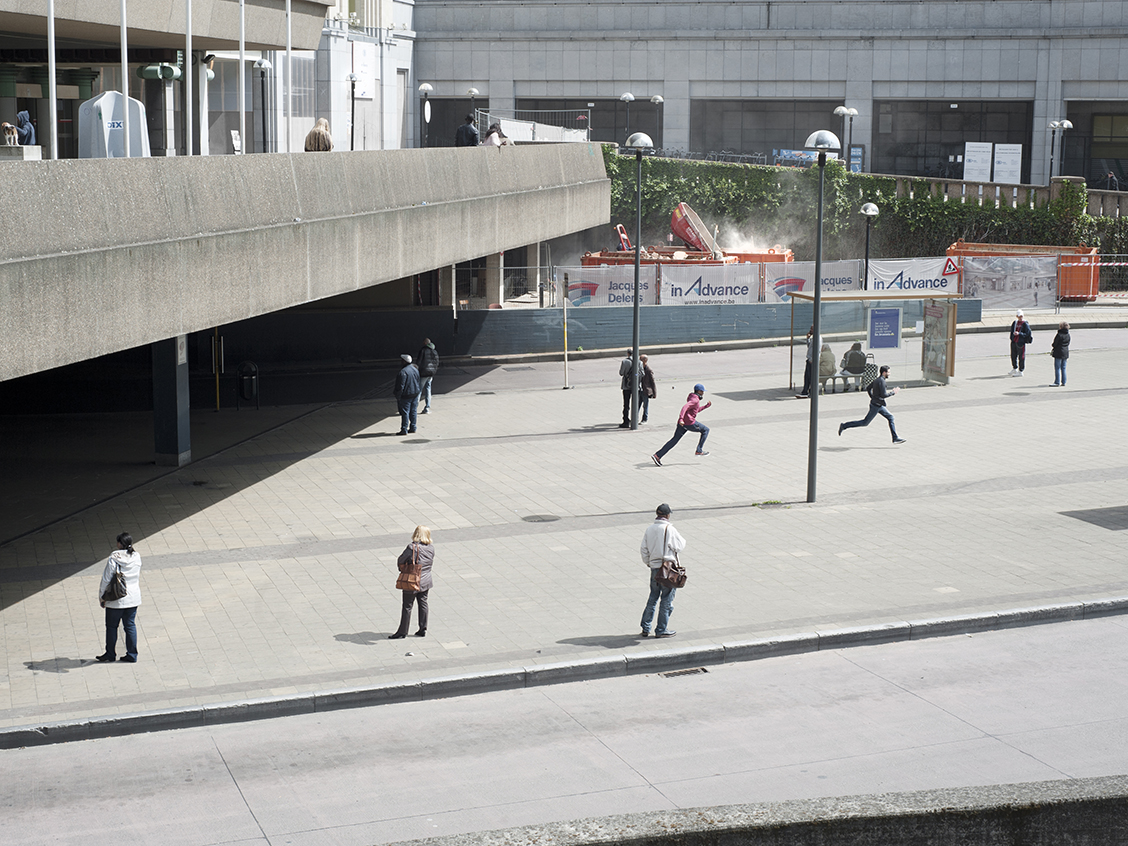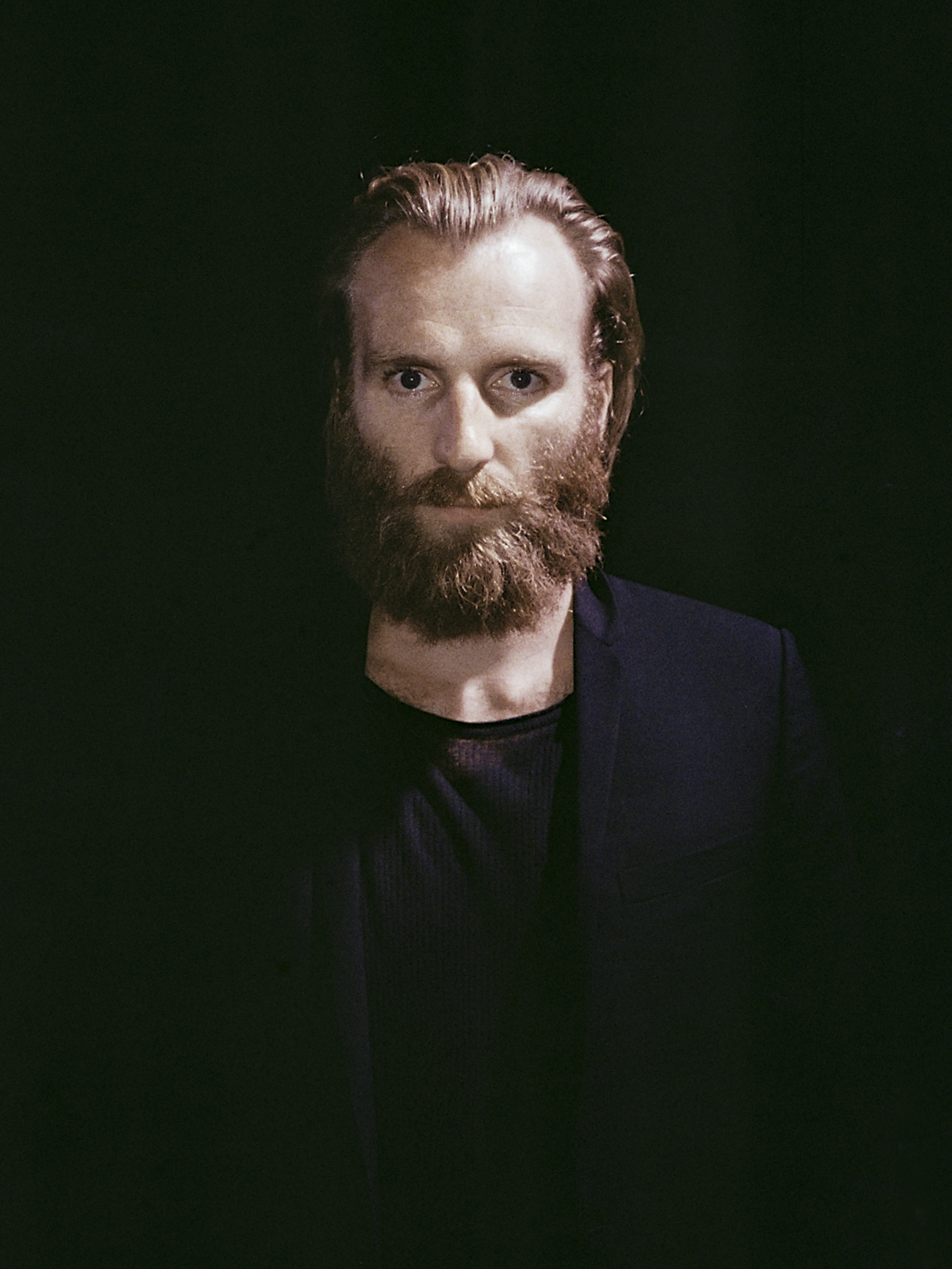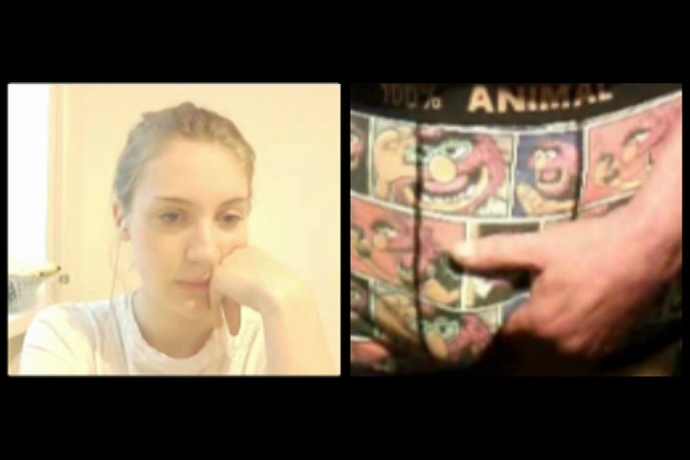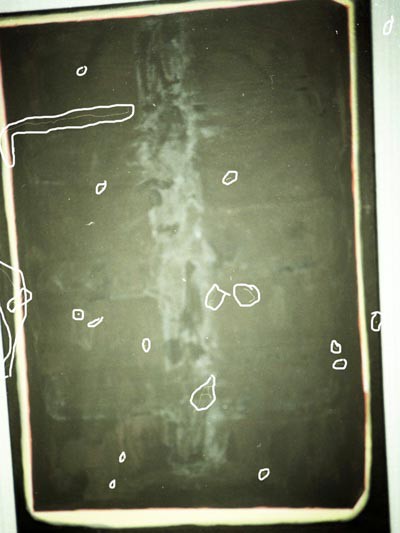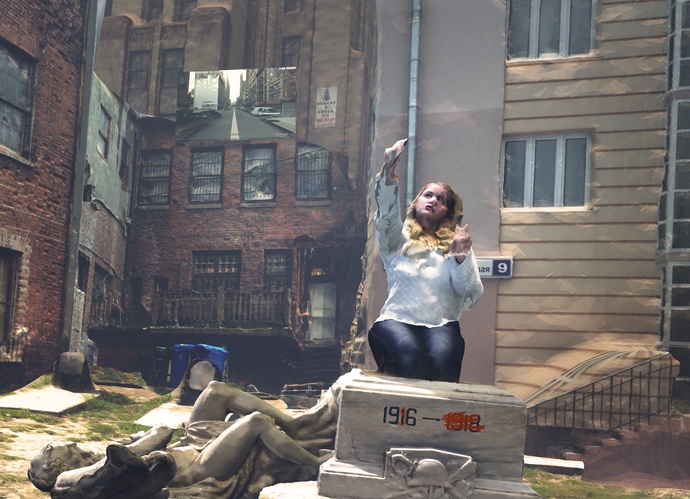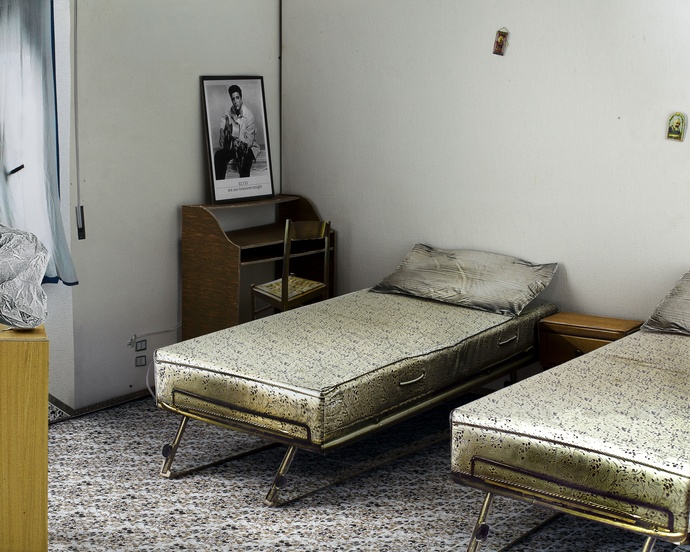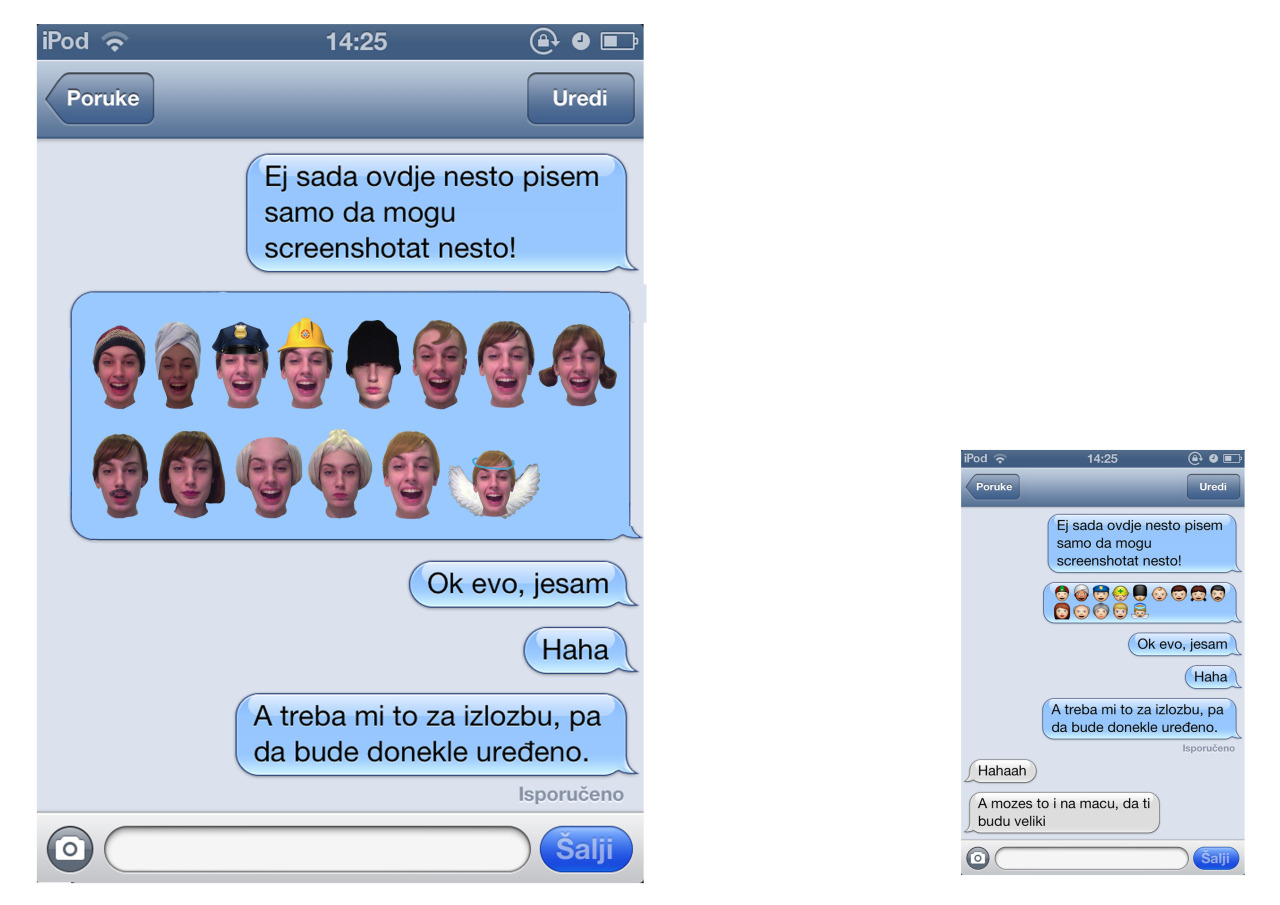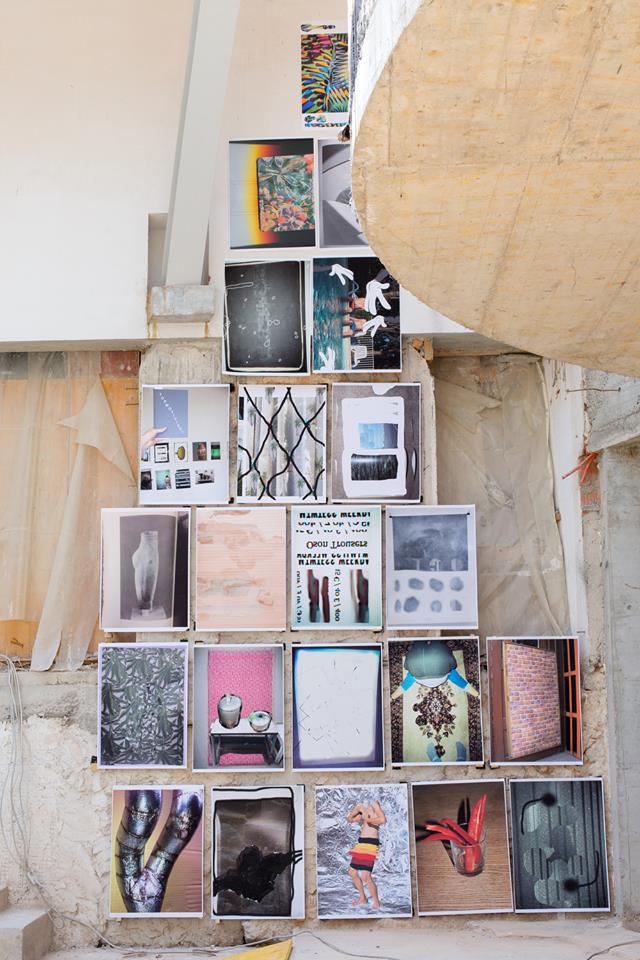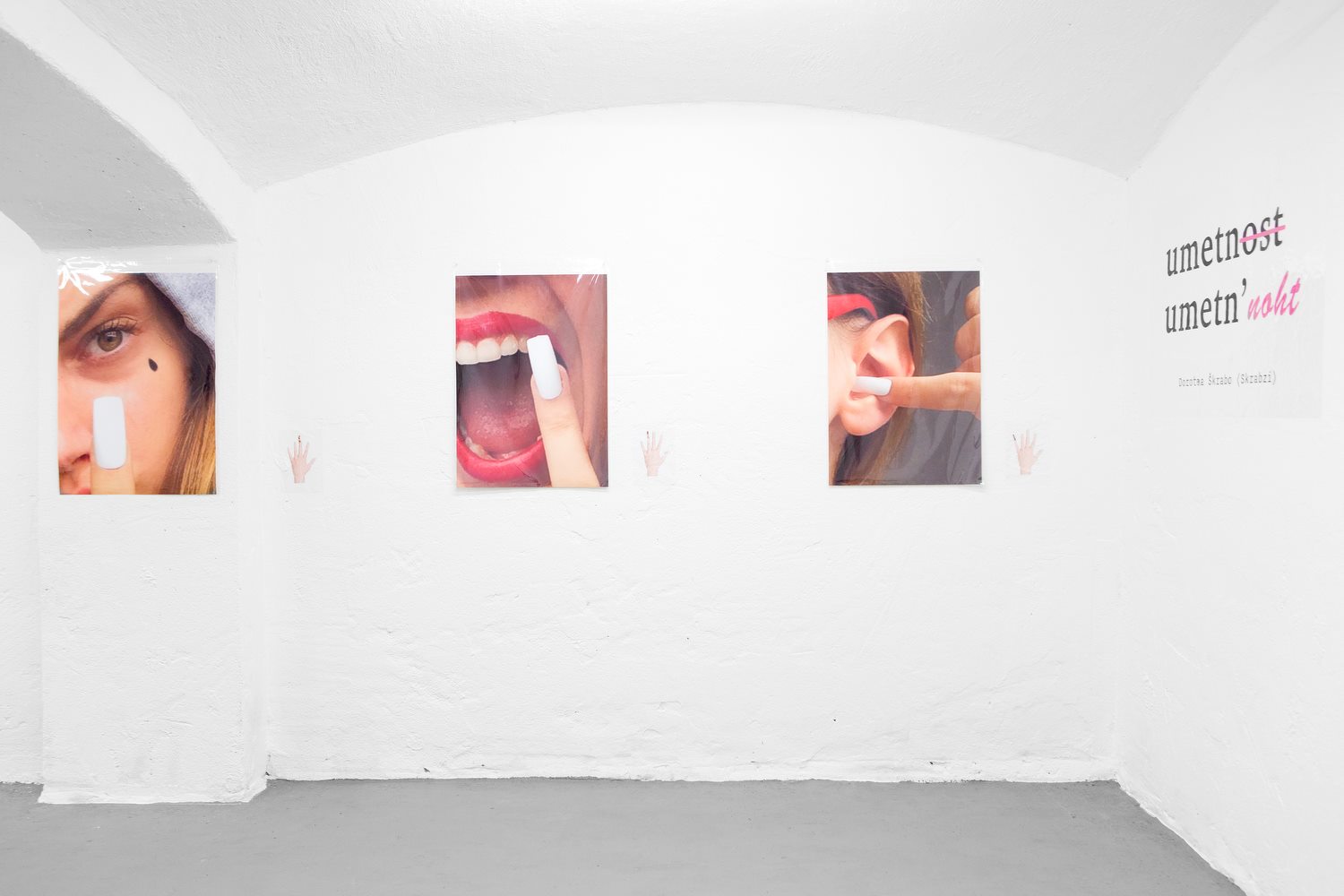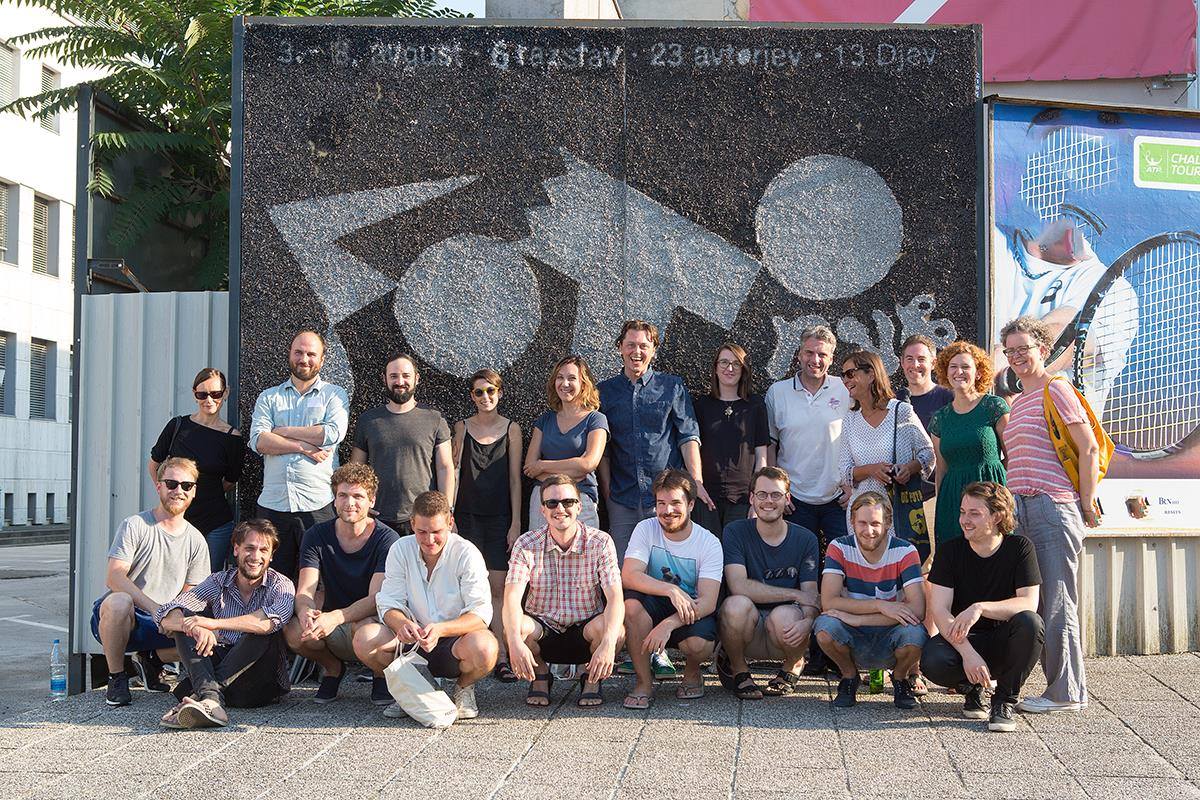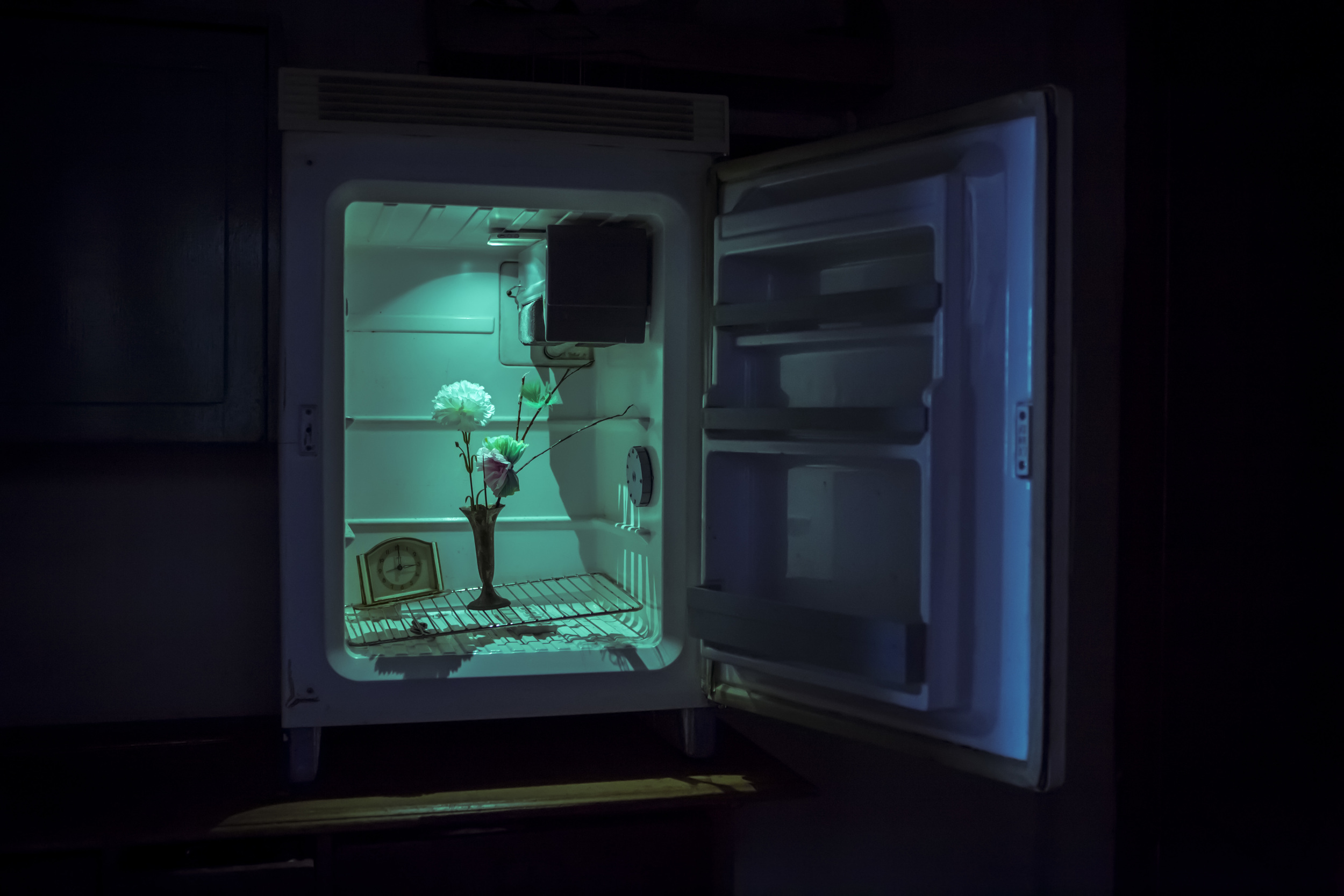John MacLean
Artist Feature
Every week an artist is featured whose single image was published by Der Greif. The Feature shows the image in the original context of the series.
Salvatore Vitale - The Moon Was Broken
Oct 07, 2015
»The Moon Was Broken« is a personal story. It has been my way to face a situation occurred in my personal life. It is a path through past memories and present days. I was 5 years old when for the first time in my life I felt the strong feeling of missing something. Going back in time, there’s a clear symbol which reminds me of that feeling. That night I was at a fun fair with my family, we were going back home when I saw the moon covered by some dark clouds. I started to cry, the moon was broken to my child eyes. I can remember exactly that feeling of something that was going to happen. A couple of weeks after my father had a car accident. I will never forget that period, the hospital. Nobody knows how he’s still alive. I’ve always been very close to ma father, we shared a lot of passions, we spent a lot of time together and I guess that a large part of my relationship with him was signed by the fear of loosing him. During the years our relationship started to be more complex. He’s a typical Sicilian man, no emotions, no feelings, no words. It’s very hard to understand what he’s thinking or how he feels. And, to be honest, I took a lot after him. I left home at the age of 18, since then our communication started to be very poor, we never see each other but a couple of weeks per year. But, some months ago, I felt the same feeling carried by the broken moon and I discovered that my father is experiencing serious health problems. He never talks about it, he never tells how he feels. So I decided to talk with him in order to understand what brought us to this point. It has been a complex discussion where a lot of feelings, memories, explanations, regrets came out. This story talks about me and my identity. But does it playing with my memory, my imaginary connected to what is real. All the symbols, the places and the subjects plays like an attempt to recover something that is missing. It is a collection of different mind’ states, a vision of what is my story and my identity today. It’s never easy entering such a personal topic, it’s not easy to tell someone to clarify a situation which stands still for years. But in doing it, in remembering what has been and what it could be, it’s possible to find kind of a new beginning. Through this work something is changing in my life and in the relationship with my father.
Artist Blog
The blog of Der Greif is written entirely by the artists who have been invited to doing an Artist-Feature. Every week, we have a different author.
We want (to) control.
Oct 16, 2015 - Salvatore Vitale
This is my last post here and I want to speak about a topic which is essential in this period of time and that I share with those guys who runs Der Greif. The main word is "Control" (in photography), a topic with several shapes, a contemporary topic which we can easily call as one of the trends of the moment. I have to be honest, when it is about control it's very hard to explore in deep all the meanings and applications it can include, but I felt the need to try - at least - to understand where and how we can find it in photography and, also, how artists include it in their artistic production. Susan Sonntag was already speaking about the role of photography as a tool of control: "Cameras define reality in the two ways essential to the working of an advanced industrial society: as a spectacle (for the masses) and as an object of surveillance (for rulers)", and in this short statement we can see all the potential of a medium which can change the perspective of society itself. It may seems obvious to say that to exercise control means to gain the power. And our recent history is full of episodes in which we can see how photography, used in this context, has been crucial to solve situations or unmask others. The control of the artistic production itself in countless situations has been one of the main governments's weapon for propaganda. I can think, for instance, about the Swiss case when, at the beginning of the past century, the government asked - or better dictated - the artists to produce pieces of art in order to underline the perfection of the country. This particular case it's very interesting because it drastically contributed to create the Swiss culture as we know it today. Going back to our times, in the last few years we can notice a strong and big presence of the so-called art-veillance in photography. In order to create a new vision of the world, artists started to use surveillance cameras, google maps, softwares and devices suitable for monitoring or mapping. We can find several examples of photography projects in which the main - and, in some cases, the only - camera is a computer screen. With the eyes of a spy, artists are catching, observing, discovering stories and facts happening in a piece of world which can be very far away or, on the contrary, very close. What we can call "useful photography" crossed the line to become "art photography". Daniel Rubinstein, trying to answer the question "What is 21st Century Photography?" on The Photographers' Gallery blog suggests an interesting reading on our time: "The demise of the industrial age is curtains for the spectacle of representation: visual surveillance is replaced with predictive policing, industrial processes replaced with trading algorithms, armies replaced with remote controlled killer robots and perspectival geometry replaced with the flat topology of the computer screen." The way we approach, watch, interact with the world is bringing us to take a distance from it generating a vision that is getting more and more objective, in which we try to leave as less as possible space to the randomness. We want (to) control. But there are many other sides of this topic. I've been discussed it a lot with my colleagues at YET magazine and we decided it was time to work on it. We analyzed the situation, did a long and deep research and we came to the conclusion that an issue about control was needed. As I was stating before, if on a side photography has been used since its beginnings as a tool of control and surveillance by governments, political and military organizations. During the twentieth century, this raised important issues about the privacy of the individual, civil rights and the veracity of the photographic document – issues that are becoming more urgent because of the growing ubiquity and sophistication of technologies to record reality. But, on the other side, the visual practice of photography is assessed in greater extent depending on the context of use and presentation, and most of all it is subject to dynamics of dissemination and sharing beyond its creation. This condition subtracts the product from the total supervision of the author, making the photographic image an autonomous body and potentially out of control. Here another important and contemporary aspect comes out: how can we trace, in the online era, the life of an image? It's funny, in a way, to think about the several uses we can do of a single image. We can put it out of its context in order to give it the opposite meaning it was supposed to bring. We tried to study all these possibile variations of the topic in order to give back a deep analysis of the current situation. The more we were going into deep the more we were finding new ways and possibilities to talk about it. In the moment in which we were close to control the content, we were losing control again. Anyway, soon you will be able to see where this process brought us. I want to end this post with another quote by Daniel Rubinstein which suggests a very interesting answer to that question I mentioned before: "In short, 21st Century Photography is not the representation of the world, but the exploration of the labor practices that shape this world through mass-production, computation, self-replication and pattern recognition. Through it we come to understand that the ‘real world’ is nothing more than so much information plucked out of chaos: the randomised and chaotic conflation of bits of matter, strands of DNA, sub-atomic particles and computer code." I will let you free to find your own conclusion.
The triumph of modern warfare: Richard Mosse meets Ben Frost, again.
Oct 14, 2015 - Salvatore Vitale
[embed width="1000" height="563"]https://youtu.be/1kZw5MAeg2k[/embed] Some days ago I found out that Richard Mosse and Ben Frost have been involved in a brand new project by Channel 4. Maybe it's worth to provide a kind of background before going on with the description of what they did. As many of you already know, Richard Mosse is an Irish documentary photographer who became very famous thanks to his work during the war in Eastern Congo documented using discontinued military infrared film in order to give a new perspective on the conflict. With this body of work he also won the Deutsche Börse Photography Prize in 2014. What about Ben Frost? He is Australian-born, Iceland-based composer and producer who compose mainly minimalist and experimental music. For sure he is one of the artists who influenced the most the experimental music scene in the last years. But he is, first of all, an artist and he knows very well photography. I've been talking with him about it last summer when I met him in Switzerland, starting from the collaboration he made with Yann Mingard for his documentary project called Deposit (you can download it here) and going on with his work with Richard Mosse for The Enclave, the film installation born as the evolution of his project in Congo. Yes, they are not new to collaborate mixing visual art and experimental music. In the past I've been very stunned by the work they made together in Democratic Republic of the Congo (DRC), where the escalation of images and music mixed together gives back this surrealistic and dynamic sense of the conflict. They also collaborated on A U R O R A, the last record by Ben Frost. When I firstly approached to the news about this new collaboration I've been expecting something on the line of the previous ones. But I was wrong. This time, Channel 4, asked them and Trevor Tweeten (already involved in the realization of The Enclave) to film a documentary on the USS Theodore Roosevelt, a U.S. aircraft carrier that operates in the Persian Gulf and fights Islamic State militants. The result is "Bombing Isis". It is very interesting to read the artists' statement on this project where they speak about the activities on board focusing on the vision of an artist who finds himself in a dramatic context, but where the core is often about the power of those gestures and physical forces that take place in the everyday activities of people and machines involved in the operation of this "sea monster". They state: "Activities aboard an active, forward deployed aircraft carrier are, of course, absolutely newsworthy. But, as artists, we were also very impressed by the sublime physical forces that were active on deck: the tremendous deafening metal machine noise, the very dangerous heat (up to 65 Celsius), the somatic, body-shaking vibration, the violent crashing and furious catapulting of multi-million dollar aircraft loaded with deadly ordinance. Yet the crew working in this ferocious environment remain perfectly calm, signalling to each other with coded gestures like actors in an absurdist theatre play." It is possible to find this feeling watching the 6'28" documentary, where images of the aircraft mixed to still images and interviews to the crew's members are building up a sense of surreal calm, where everything seems to stand still while, in the reality of the facts, one of the most cruel and underhand war is happening. As it happened before when an artist has been invited to document a story - I can think, for instance, about some documentary movies by Pier Paolo Pasolini - what comes out is a new vision, maybe a subtle one, but that for sure can tell a lot. They say: "This is the triumph of modern warfare, casting a veil over individual ethical culpability, concealing bloody hands with lily-white gloves."
Contemporary digital natives
Oct 13, 2015 - Salvatore Vitale
In the last few months I've been invited to take part to several festival and events around Europe as a portfolio reviewer. I can't hide that reading portfolios is something that I really like and enjoy as it is a good way to meet new talents and observing what is going on in photography's world. It's always so inspiring to see new body of works, their development and the process behind, in a sort of protected space where you are not faced - in many cases - with a finished work, but mainly on some ideas and visual suggestions that are still up to be fully developed. Of course, sometimes you can feel amazed, other time very disappointed. That's a part of the game. As a reviewer I always feel a big commitment cause I know that my feedbacks and words can completely change a body of work. I mean, this is not something new, but it's important to underline it. Anyway, all of this brought me to see so many works on the past few months, works that come from several regions and parts of the world, of course, but that are incredibly closer than it could seem. I can speak about different and several contexts, but there is one particular experience that I want to underline in this post. Last August me and a great panel of reviewers such as Aaron Schuman, Fergus Heron, Karen McQuaid, Marcella Manni, Marga Rotteveel, Marina Gržinić, Nicola Von Segner, Štěpánka Šimlová, Taiyo Onorato (TONK) and Elena Vaninetti (my colleague from YET magazine) have been invited to Slovenia, in this small town called Novo Mesto where "fotopub" festival happens. But why I'm calling exactly this experience? Well, I can say that one of the first reasons is that I didn't know what to expect from it. I mean, what can you imagine of a festival that borns from the ruins of a well-known established festival of documentary photography to focus on contemporary photography? You can agree with me in saying that preconditions were already interesting. After an unforgettable car trip from Venice to Novo Mesto, finally it was time to discover the work of those young contemporary photographers. I've been quite inspired by the big variety of solutions and visual languages presented during those two intensive days of screenings, but I've also been surprised by the conceptual approach. It was very easy to notice that almost all the presented works, although they were examining various subjects, were playing on "web-based topics". Well, at this point one can think - and in a way it is for sure one of the reasons - that it is a normal heritage of a generation which grew up with the web. They are (almost) all digital natives. But I think there is something more. So I tried to discuss the reason of this trend both with my colleagues and with some of the invited artists. As I was saying before, the subjects and visual approaches were various: they were going from the use of Google maps and street view to 3d rendering, collages about very personal topics, videos and installations, re-interpretation of art or usage of search engines. It was like opening up a huge library in which finding all the possible usage of the web itself. Some contemporary photographers are trying to depict reality, again. But a virtual one. Which in a way - and please don't get mad at me - it can be compared to what photojournalists do when they try to depict objective and uncontested reality. But what does it means to depict a virtual reality? First of all it means to be an user. An active user. Something that those photographers I met are doing, in a way or another. And in many cases they were the main subjects or characters of their projects. In general, more than the work itself - where problems come, since it is very hard to find a great visual language for it - I was interested in the idea behind the projects, in what brings them to explore one or the other aspect of this virtual reality. Sometimes I've been totally shocked by how far some of them could go crossing some boundaries. But the main feeling - at least for me - was to notice that there was something missing. All of this suggested to me another question: why taking the web as a starting point but, in several cases, not as an ending one? Why not to cross those boundaries also in the use of the media itself? Or why coming back again and again to the idea of the printed matter? I've been finding myself several times to suggest to create a web-based output. Maybe it was just a matter of doing a step more, going deeper into research, studying a new language, but I felt the strong need of a step beyond in order to underline the nature of the project. We can start endless topics on printed matter versus online media, this is not what I intend to do here, but sometimes I got the feeling that many photographers are trying to leave a concrete sign and the web is still something aleatory. It is important to underline that I'm not speaking only about fotopub's artists - of course -, but I'm using this example as starting point of my reasoning. Be careful, I'm running a magazine which is on paper, I'm printing my photos and I'm a photo book and magazine lover, but I also believe in the great potential of the web and virtual platforms. The way you choose to present your work is part of your work itself and it can bring it to another level or, on the contrary, being the weakest link. There would be a lot more to be said, but a post is a post and probably it will be already hard to come until the end of it. I'm using this space to give some starting points, some suggestions that can lead someone to start a discussion or a research or whatever. What I want to say in order to end this post is that I'm very curious to see what is going to happen in the next five or ten years. I had kind of a taste during those Slovenian days and it was very positive at the end. So, let's see! PS: You find the list of exhibited artists at fotopub's website fotopub.com/artists
Sharing is caring
Oct 10, 2015 - Salvatore Vitale
On the last weeks I've been wondering how to start this take over, but at the end I decided that the simpler is the better is. So here I am and I just want to introduce myself and how is going to be here for the next week. You already know my name so I'm not going to tell you again. Here I'm featured as a photographer because this is what I mainly do, but maybe not all of you know that I'm also the co-founder and editor-in-chief of YET magazine. For this reason it is very interesting for me and I am so glad to be here as a guest of another magazine, and this point will be also the topic - or at least a big part - of one of the posts you're going to find here on the next days. But let's do a step back, as I stated at the beginning of this post, I'm going to do a small introduction of this take over. What I would like to do is underlining some of the most interesting things I've discovered lately, giving you my personal impression and view on them and - why not - involve you to start some discussions. Just feel free to drop me a line. Possibly you will discover new works, but also new visions and debates around photography's world. Maybe some trend also and, for sure, several and different inputs. I've been a lot around on the last months, "touring" different countries and, during those trips, sometimes I've been impressed, other times I've been very disappointed. I think it can be worth to share all of this with you. And since I'm obligated to do it - of course I am -, I will also speak about a very interesting topic related to the upcoming issue of YET magazine which involves also a collaboration we're developing with Der Greif. Well, I think this can be quite enough for an introduction, so I will leave you with a photo from a photographer I really like and with which I've been speaking today. See the credits under the picture.


